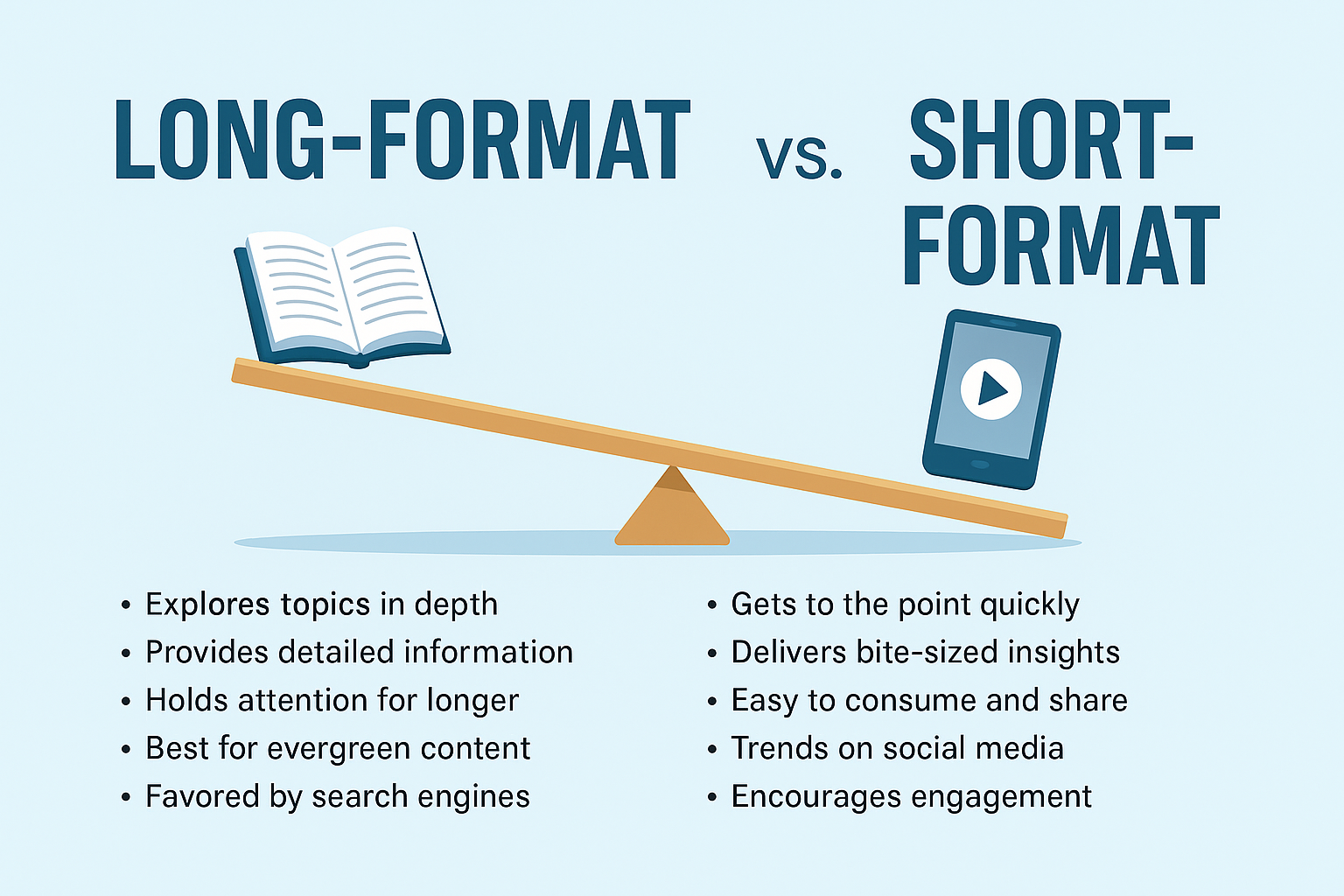Marketing
Short-Form Content: Why the World Can’t Stop Watching Quick Videos?

Introduction: A Scroll That Never Ends
Think about the last time you opened Instagram, YouTube, or TikTok. Did you watch one video, or did it turn into ten, then twenty? Most of us already know the answer. Short-form content has quietly taken over the way we consume information and entertainment.
It is not just a trend anymore. It is the default. In less than a decade, we moved from long Facebook posts and 15-minute YouTube tutorials to 30-second Reels and 60-second Shorts. And the shift is not slowing down. But why do we love short-form videos so much? And what are they doing to our brains, our attention, and even our culture?
The Appeal of Quick Content:
Short-form content works because it is easy.
- Low commitment: Watching a 30-second video feels harmless compared to pressing play on a 45-minute documentary.
- Perfect for mobile: Most people scroll on their phones, and vertical videos fit right in.
- Shareability: A joke, a recipe, or a motivational clip can be passed instantly to a friend.
- Instant reward: Each swipe offers something new, which keeps us hooked in the loop.
Marketers love it because platforms reward these formats. Creators love it because their reach multiplies faster. And audiences love it because it entertains without effort.
Attention Spans and the Cost of “Snackable” Media:
The popularity of short videos is deeply tied to our shrinking attention spans. Studies across the last two decades suggest that the average person can now focus on one screen task for less than a minute before getting distracted.
Television and film have also changed to match this pace. Shots cut faster. Storytelling is tighter. Social media simply amplified the trend: we are used to constant novelty, and short-form content delivers exactly that.
The downside is obvious. When our brains adapt to quick rewards, longer formats like books, podcasts, detailed videos, begin to feel heavy. It becomes harder to sit through them without reaching for the phone.
Side Effects We Don’t Always Notice:
Short-form content has benefits, but there are side effects worth pointing out.
- Reduced focus: Constant scrolling trains us to expect stimulation every few seconds. Deep work feels unnatural.
- Addiction loops: Algorithms push endless feeds. What feels like five minutes can easily become an hour.
- Shallow learning: We learn bits and pieces: recipes, hacks, quotes etc. but rarely engage deeply with one topic.
- Emotional rollercoaster: Shifting from a funny clip to a tragic news video in seconds leaves little room for processing.
In short, our minds adjust to a rhythm that isn’t always healthy.
The Good Side of Short-Form Content:
It is not all negative. Short-form has also given us a lot:
- Accessibility: Anyone with a phone can create and publish videos.
- Creativity: Short formats encourage experimentation. Comedy skits, dance challenges, storytelling, all thrive here.
- Democratization: Small creators and niche communities can reach millions without big budgets.
- Marketing power: Brands can tell stories quickly, build awareness, and connect with audiences where they are.
In many ways, short-form videos reflect our times: fast, diverse, and global.
The Balance We Need:
The real challenge is not about choosing between short and long content. Both have their place. Short videos work when we want quick laughs or fast information. Long formats still matter when we need context, depth, or reflection.
What we risk losing is balance. Too much short-form consumption can make us restless, unable to sit with slower forms of media. To protect focus, some people already schedule “no-scroll” hours or delete apps temporarily. It is becoming part of digital self-care.
Conclusion: A Culture That Scrolls
Short-form content is not going away. It will only grow sharper with AI editing tools, AR filters, and smarter recommendations. The question is not whether we will consume it, but how we will manage it.
We love short-form because it matches our pace, our devices, and our moods. But it also shapes how we think, how long we can focus, and what we choose to value in entertainment and information.
The scroll is here to stay. The only thing left for us is to decide when to stop.



